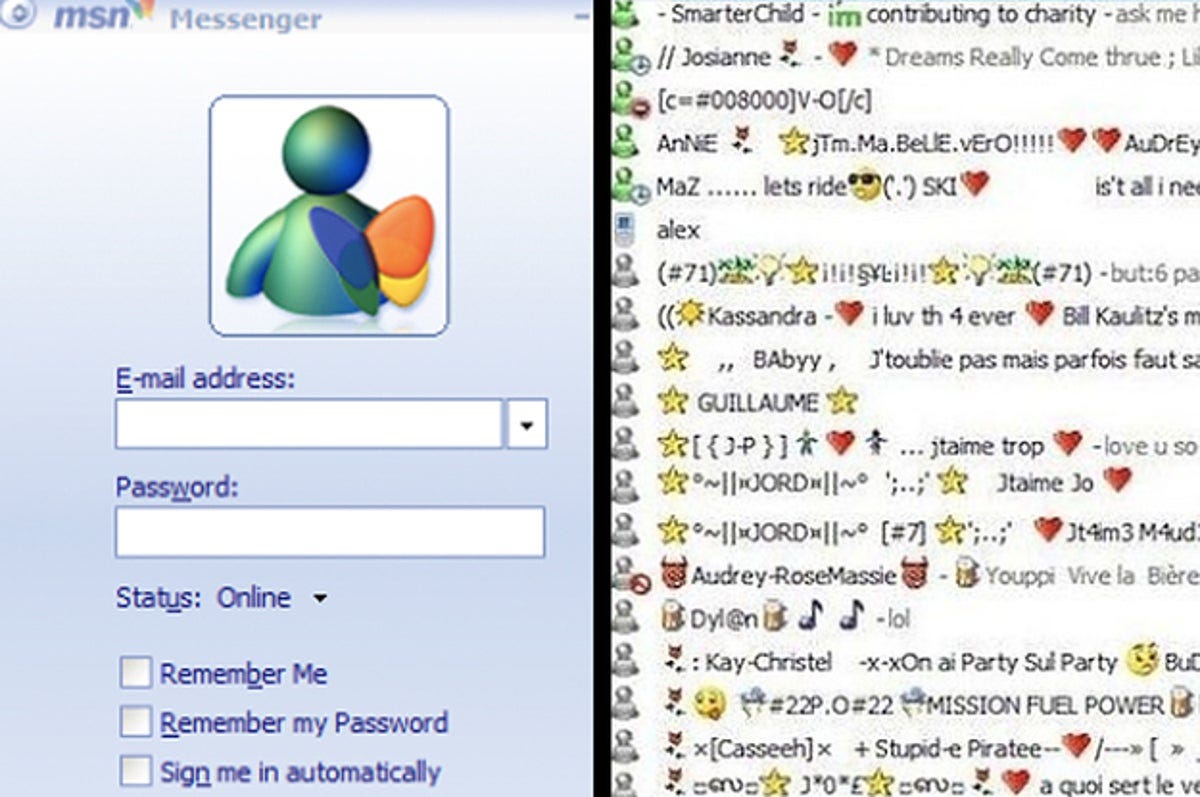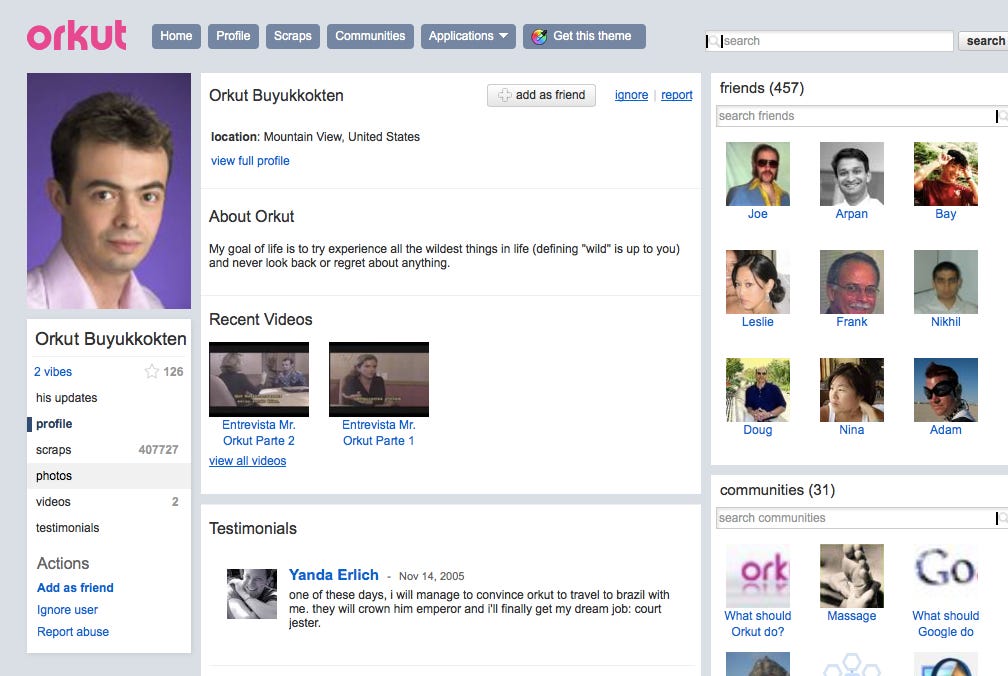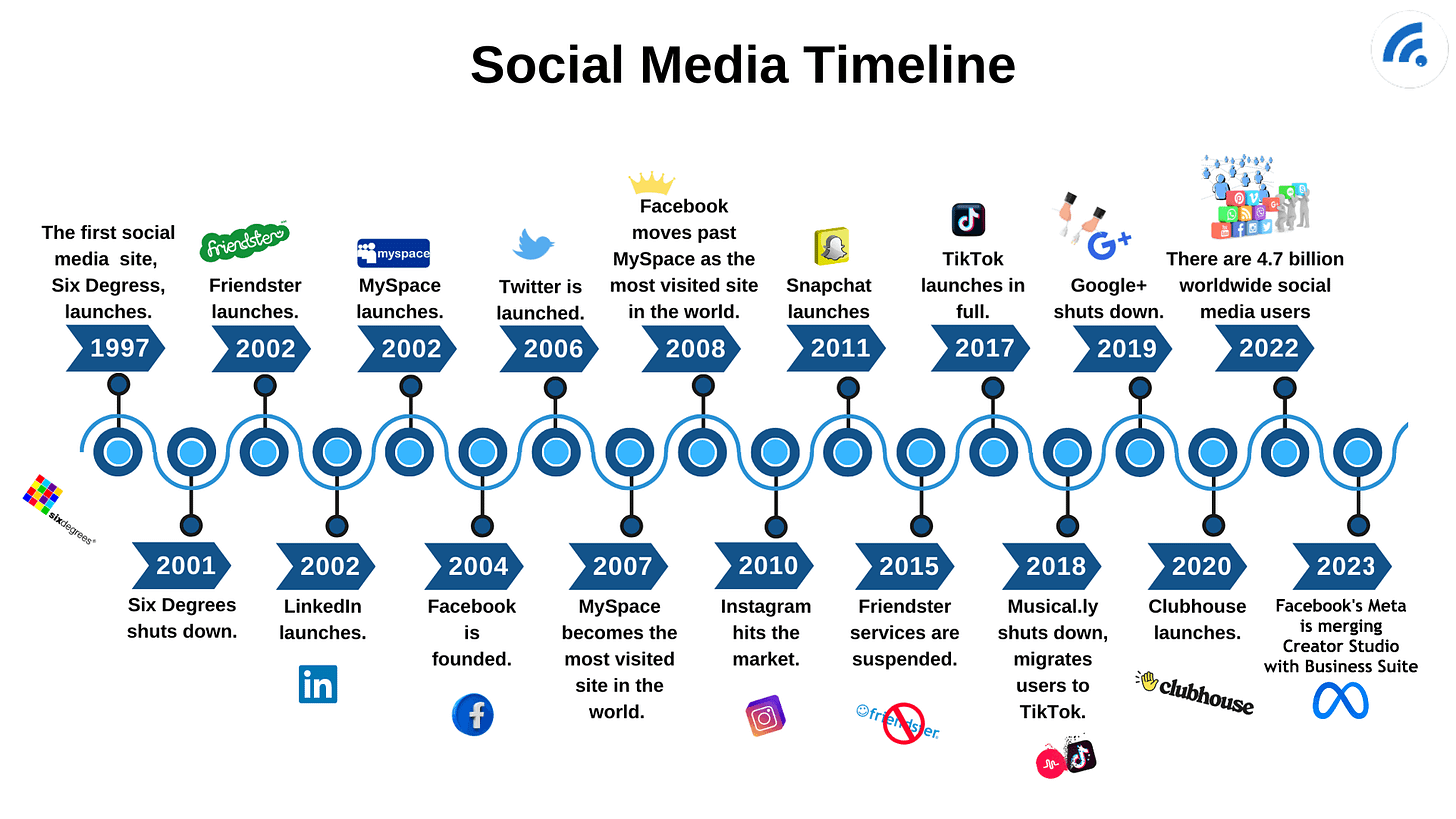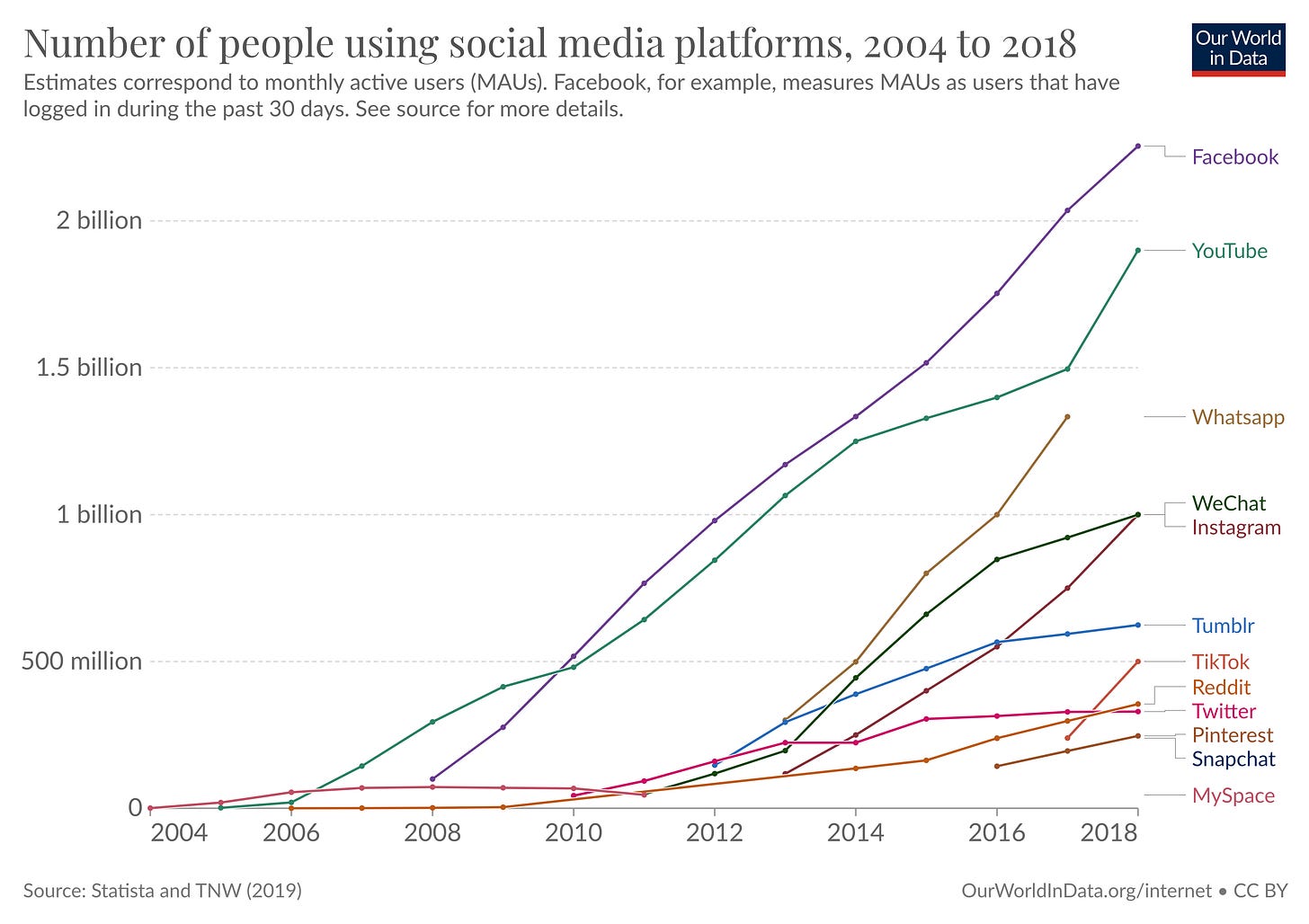Is social media really social?
A personal essay about a millennial's love hate relationship with social media.
How many friends can we really have?
Robin Ian MacDonald Dunbar is a British biological anthropologist, evolutionary psychologist, and specialist in primate behaviour. In 1992 he published a paper1 titled, Neocortex size as a constraint on group size in primates in the Journal of Human Evolution.
In this paper he presented a rule that suggests that humans (former primates) can comfortably maintain about 150 stable social relationships due to cognitive limitations rooted in brain size, particularly the neocortex. This rule came to be called Dunbar’s Rule.
150 was the magic number for human social relationships.
This number reflects the maximum group size in which individuals can know each other personally and maintain meaningful connections. While we may interact with many more people casually, only around 150 can be part of our core social circle, including friends, family, and close acquaintances. This theory has implications for homes, communities and workplaces influencing how we build and manage human connections. But it had serious implications for the world of media. How you may ask? Since the early 2000s several media and technology tools were invented to help humans build, nurture and sustain social relationships.
They were called social networks or social media and they were designed to help you connect and nurture your bonds with these 150 people in your extended community.
The shift from old to new media
I was born in 1993. I was a late millennial (1981 to 1996). Most of us spent our early childhood in a world filled with old media. Old media refers to traditional forms of mass communication that dominated before the rise of digital technology. Examples include print media such as newspapers, magazines, and books; broadcast media like radio and television; and other analog formats such as vinyl records, cassette tapes, and film reels. Landline telephones, postal mail, and physical billboards or posters also fall under old media. Growing up in the late 1990s, I spent time reading papers at home, listened to music on the radio during long drives with my parents and went for the occasional film with my parents on the weekends.
Most millennials have an interesting vantage point because they were the first generation to experiment with new media tools.
We got a desktop computer at home in the early 2000’s and also got an internet connection. My home setup looked like the image above and it led to my gradual shift from old media to new media. I first started using this computer for research for school projects. I then slowly gravitated towards entertainment media in the form of music and films. Here are some technology tools that emerged around the same time and continued to emerge every few years till the early 2020s.
I was an early adopter of most technology tools because of the ease of access to a device at home. I spent a lot of time exploring and understanding these new technology tools.
With the adoption and exploration of each new social networking tool, I noticed a subtle gradual shift in my social preferences.
Till 2004 I spent most of my time outdoors playing sports or running around in the dirt with other kids in my neighbourhood. But in the mid 2000s I noticed a gradual shift. Lots of kids in my neighbourhood preferred to spend the evenings after school at home on their computers. They had joined these websites like Facebook, Orkut and MSN Messenger. I stayed outdoors for as long as I could. I was not a gamer and did not have a natural inclination to technology and computers. But eventually curiosity got the better of me.
My friends kept telling that these social networking sites were a way to stay connected with people without meeting them in person.
The Pros of Digital Social Connection
Why would anyone want to stay in touch with someone without meeting them? I was entering my awkward teens and this aligned well with what social networking sites wanted from you. We created profiles, put up random pictures and added a cool status. We were good to go. After school we would add updates to these profiles and start connecting with each other in these digital worlds. There were lots of benefits to connecting socially in the digital world including:
No awkward eye contact
No awkward small talk
No awkward body language
No need to set your hair
No need to worry about acne outbursts
No need to worry about your buck tooth
No need to worry about body odour
No need to worry about facial hair in the wrong places
No need to worry about the clothes you were wearing that day
No need to worry about being too extroverted or too introverted
I started with MSN Messenger, then moved to Orkut and then came to Facebook2. Here are snaps of those digital environments that we were immersed in as young teenagers in the early to mid 2000s.
It was fun to become a teenager in this age of new social networking tools. Youtube came up in 2006 and helped you connect with other people using video. Spotify came up in 2008 and helped you connect with other people using audio. You also had other text based social networking tools that emerged at the same time like Twitter in 2006 and Tumblr in 2007. All this technology came together as a new form of media to connect with people socially. People began calling it Social Media.
What is Social Media?
Social media refers to digital platforms and technologies that enable users to create, share, and interact with content and connect with others in virtual communities or networks.
The key characteristics of a social media platform or tool include:
User-generated content (text, images, videos, etc.)
Profiles and identity creation
Social interaction (likes, comments, shares, messaging)
Community-building and networking
Real-time communication and feedback
The history of social media is a lot younger than you think as reported in this visual from the website, Broadband Search.
Social Media and Smart Phones
The writer, Lyndon Seitz3 described how the growth of social media was also partly attributed to the wide spread use and proliferation of smart phones in the late 2000s.
In fact, it wasn't until the late 1990s that it really became popular however it took even longer, until around 2005, for it to become the social and cultural institution it is today.
There are a few reasons for this, but perhaps the most significant is the now universal nature of smartphones. We can access the internet from pretty much anywhere, which means social media is never more than a few clicks away, which wasn't the case until the iPhone hit the market back in 2007.
Furthermore, it took some time for the tech companies to figure out why people wanted to use social media in the first place.
Here is a visual that shows you the growth of social media users from 2004 to 20184.
I actively experimented with every social media tool on the market as a teenager. I got through high school in the late 2000s. I struggled with social communication in the real world but strived with social communication in the digital world. In 2012, I moved cities for college and that is when my parents purchased a smart phone for me. I installed every possible social media application on my smartphone. This included Facebook, Twitter, Youtube, Tumblr and Spotify.
I also installed apps like Whatsapp and Instagram that were made primarily for smart phones rather than laptops or desktop computers. I used Whatsapp to stay in touch with school friends and my family back home. I shared a lot audio notes, video clips and long text messages with them. I also created an Instagram account in 2012. I started uploading photos to this new photo sharing social media account. This was one of the first photos I uploaded on Instagram.
I got three likes. There were no comments or shares. I was feeling a bit left out. The photos my friends uploaded got more likes, comments and shares. All was not well. There were problems with these social media tools. There were many problems.
The Cons of Digital Social Connection
I made a lot of friends on Facebook and gained a lot of followers on Instagram.
For most of the 2010s and my twenties I thought that the strength of my social network was directly correlated to the number of friends I had on social media.
I know it is a silly thought but I was naive and young and was allowed to have some silly thoughts.
I also noticed a few odd things about how I interacted with people in the real world because of these social media applications.
Every time I met friends in person and there was an awkward silence, I had this urge to check notifications from other friends on the social media applications on my smart phone. I noticed that I started valuing likes, shares and comments more than hugs, handshakes and eye contact.
Every time I experienced something beautiful in the real world, I wanted to capture it for the digital world. This included a sunset, a concert or a nice meal. I started comparing meals, concerts and sunsets that I experienced to find a reel or photo that got the most likes, shares and comments.
Every time I experienced something difficult or challenging, I would take a break from social media. I knew that most people never shared the negatives or the lows on social media. It was only for the highs and achievements. I had to conform to the socially accepted norms on these platforms.
Every time I saw social media acquaintances attend events, travel, or succeed, I felt like I was falling behind. I got hundreds of these notifications on a day to day basis. Eventually it seemed like the whole world was travelling and succeeding and I was not doing much with my life.
Every time I focused on a task for longer than twenty minutes, I thought I needed a social media break. I would then open the social media apps on my phone. Since 2016 I had trained my mind to watch or listen to short videos and clips on platforms like Instagram, Youtube and Tiktok. I wanted people to make their point in 20 seconds or 60 seconds. Anything more and they lost my attention. I noticed that my ability to focus on tasks and people had significantly reduced because of this need to constantly check notifications or engage with short form content on social media applications.
Every time I had a window of free time after work in the evenings, I wanted to spend that time on my smart phone browsing through social media updates of my friends and followers. I would prefer this over meeting a friend in person. I would often do this late into the night. This would affect my sleep cycle, and mood at night. It would also strain my eyes and cause several sight related problems in the long run. I also got some neck/back pain due to all the long hours of night time scrolling.
Every time I put out a post on social media, I would start thinking about my likes, comments and shares. I would constantly check for updates to see how many people have liked, commented or shared my post. I was eager and desperate for digital social validation from people I barely knew or spent too much time with in my real life.
Every time I posted an update on social media, I had an urge to plan the next one. Social Media Platforms incentivized you to constantly create new content for them. Your old posts did not matter as much. It was your most recent post that would be promoted by the algorithm. Soon I was mimicking posts created by top influencers and celebrities rather than share a real update about my life.
Every time I browsed through my social media feed, I noticed that it was curated to mostly include posts by people that agreed with my world view. The recommendations driven by the algorithm on these applications rarely challenged or questioned my thoughts. These platforms wanted me to spend a lot of time using their applications. So they were incentivized to feed me a never ending stream of the things I liked or shared consistently.
Every time I met an old friend or acquaintance, I was surprised to notice how much they knew about my life. They had religiously followed all my social media posts. There was nothing new to share with them. They knew all the highlights of my life because they stayed in touch at a distance on these social media platforms.
In my mind I thought the highlight reels presented on these social media accounts were the real lives of these people. In my mind I thought digital likes, shares and comments were very similar to long hugs, warm handshakes and kind eye contact. I was wrong.
So I took a long extended break from social media.
What happened after my break from social media?
I downloaded the applications and came back to these social networking sites after 9-10 months.
It seemed like nothing had changed in the digital world. No one missed me. Few people left a message. No one was eager to get a daily update about what I was doing in my life. It made me realize that my personal life was not really important to a lot of people beyond the few in my close inner circle.
The break helped me realize that social media is a powerful tool to stay connected with your loved ones and old friends. It helps companies and people create content and share stories about important and impactful work. Voices that were historically marginalized or underrepresented now have platforms. Social media platforms break down traditional gatekeeping structures like publishing houses, newsrooms, or film studios, allowing anyone with a compelling story to reach a global audience instantly.
But there were too many updates to follow. I did not need to get an update about each new global political development and the repercussions of the same. I did not need to get a notification every time a company launches a new product update. I did not need to be informed about every single achievement and life highlight of a person I met once at a random event. I empathize with all these causes, events and stories but I don’t have the bandwidth to engage with all of them at the same time. For many of these causes, I had no expertise, training or background to share a relevant and valid opinion. But I had this inner urge to share an opinion on every global issue or event just because I had a account on social media platform and a few hundred followers.
Here are some more scary statistics.
Dave Chaffey, is a marketing consultant (Feb 2015) from Smart Insights Digital Marketing who reported5 and referenced research from Global Web Index that stated that 63.9% of the world's population uses social media. The average daily usage in February 2025 is 2 hours and 21 minutes. Neil Patel is a digital marketer who decided to look at the amount of content produced on the 6 major social networks (Facebook, YouTube, Instagram, TikTok, LinkedIn, and X). His findings6 reveal that just between those six social networks, over 1.1 billion new pieces of content are being published every single day.
There was too much social media content that I was trying to engage with on a daily basis. This would continue to grow as more people started sharing their lives and using these application across the world.
The break also made me realize that social media should never replace friendships in the real world. It got me thinking about my social connections friends.
How many of these friends would turn up for me when things got ugly or difficult? The answer to that question was both scary and affirming. I had to change a few things about my relationship with social media.
I decided to limit my social media usage to only 30 minutes a day at a very specific time. I did this for a week. I did this for a month. I have now done this for years. It has considerably improved the quality of my relationships with family and friends.
I decided to nurture a few real world friendships rather than constantly engage with thousands of ephemeral digital connections. This shift in my relationship with social media vastly improved my life and also helped me engage with social media more mindfully. This break from social media gave me clear answers to the questions listed below.
Do I need 150 friends who like, share and comment on all my posts?
OR
Do I need one or two friends that hug and sit with me on the good and bad days?
So is social media really social?
The answer is really dependent on how you use it on a day to day basis. Social Media was created to help you nurture your social life. But how you use social media on a daily basis in the long run can either negatively or positively impact your social life.
I am reminded of this personal letter by Orkut Büyükkökten7, the founder and engineer behind Orkut. I often go back to read this message when I am feeling overwhelmed by all the social media applications and notifications on my phone. I try to remember that the world is a better place when we get to know each other a little bit more. That is what social media needs to do for me to really be social.
I also loved what the multi-hyphenate creator, Bryce Dallas Howard said in this TED talk about preserving your private life in the age of social media. My favourite quote from this talk was when she said that “there was a specialness in knowing that what I share with my husband, child or best friend is only for them and no one else…” (see 07:15 to 07:25). In this very personal talk, she draws on three generations of family wisdom and her experience as a public figure to share her thoughts on how "a private life makes a public life worth living."
What has helped me recently?
I put down my phone more often. I shut down all notifications more often. I look the person I am sitting with in the eye and ask them about life in real time. I go for long walks with friends and spend lots of unplanned time with them in parks and cafes. I allow myself to get bored more often. I allow myself to feel a bit more human and a bit more flawed. And I have no need to share every tiny detail of my life on social media. The whole world of social media connections does not always deserve full access to my happiest moments, if they will judge and distance themselves from me when I am at my lowest. Going forward those special intimate irreplaceable private moments are reserved for me, my closest friends and my loved ones.
I’ll end this essay with a quote from one of my favourite thinkers and writers
"Social media has given us this idea that we should all have a posse of friends when in reality, if we have one or two really good friends, we are lucky."
– Brene Brown
If you enjoyed this piece you will also like this other essay on creativity and communities.
How Creative People Build Communities?
I have always been intrigued by how creative people find ways to build communities for connection, feedback, inspiration, cross pollination, accountability, emotional well being and more. In this essay, I want to explore how creative people around the world have built communities to drive meaningful connection over time. But…
What is your experience with social media? What tools do you remember using growing up in your part of the world?
How do you balance the very private and the very public aspects of your life on social media?
I would love to hear your thoughts in the comments below.
Until next time,
Keep Learning.
Abhishek
Dunbar, R. (1992). Neocortex size as a constraint on group size in primates. Journal of Human Evolution, 22(6), 469–493. https://doi.org/10.1016/0047-2484(92)90081-j
Grove, V.J. (2014, February 13). Facebook then and now (pictures). CNET. https://www.cnet.com/pictures/facebook-then-and-now-pictures/
Seitz, L. (2024, April 18). History of Social Media: It’s Younger Than You Think. Broadband Search. https://www.broadbandsearch.net/blog/complete-history-social-media
Ortiz-Ospina. E. (2019, September 18). The rise of social media. Our World in Data. https://ourworldindata.org/rise-of-social-media
Chaffey. D. (2025, February). Global social media statistics research summary. Smart Insights Digital Marketing. https://www.smartinsights.com/social-media-marketing/social-media-strategy/new-global-social-media-research/
Patel. N. (Date Unknown). You’re Wasting Your Time Creating Social Media Content. Neil Patel Website. https://neilpatel.com/blog/wasting-time-social-media/
Büyükkökten, O. (Date Unknown). On social media. Personal Website. https://www.orkut.com/















Okay Abhishek, you NEED to write more of such essays that are personal. I am always in such awe of your informative and well-researched posts but essays like these where I get to see more of your thought, feelings, and a bit of your journey? More of that please!
For me, the computer meant Jump Start video games and Paint at the age of 4-7, Barbie and dress up games on the internet between 8-12, and Facebook, Yahoo!Answers, and Omegle between 13-17. I worry for the early age I was exposed to stranger on the internet and I worry for the teenagers today. There are many beautiful things about the internet and social media but it’s also extremely potent in its impact and accessibility. We usually talk about accessibility in terms of us accessing these platforms but I primarily see social media as a way capitalism/companies access us/our minds in ways we can never even imagine.
As for friends on social media? That feels oxymoronic. And you’re right, I too rather have a handful of friends around me than the illusion of friends based on how many followers and likes I receive.
Such a wonderful personal essay Abhishek. Agree with and sort of experienced most things you've mentioned. Orkut part was so nostalgic. I have a love hate relationship with social media tbh. Social media has led to a couple of meaningful relationships and also exposure to some wonderful people who I wouldn't have possible met otherwise. Both of which have added immensely added to my life. I've also found personal and professional interest of styling and photography which I might have not found otherwise. Having said that I do face the brunt of the other side aswell, lately especially I've been feeling social media fatigue a lot. The serious mental exhaustion purely from consuming, followed by it's addictive nature (by design) making it so hard to stop scrolling.
Completely resonate with the thought of personal life being private, that people on the internet don't have access too, only your inner circle does.